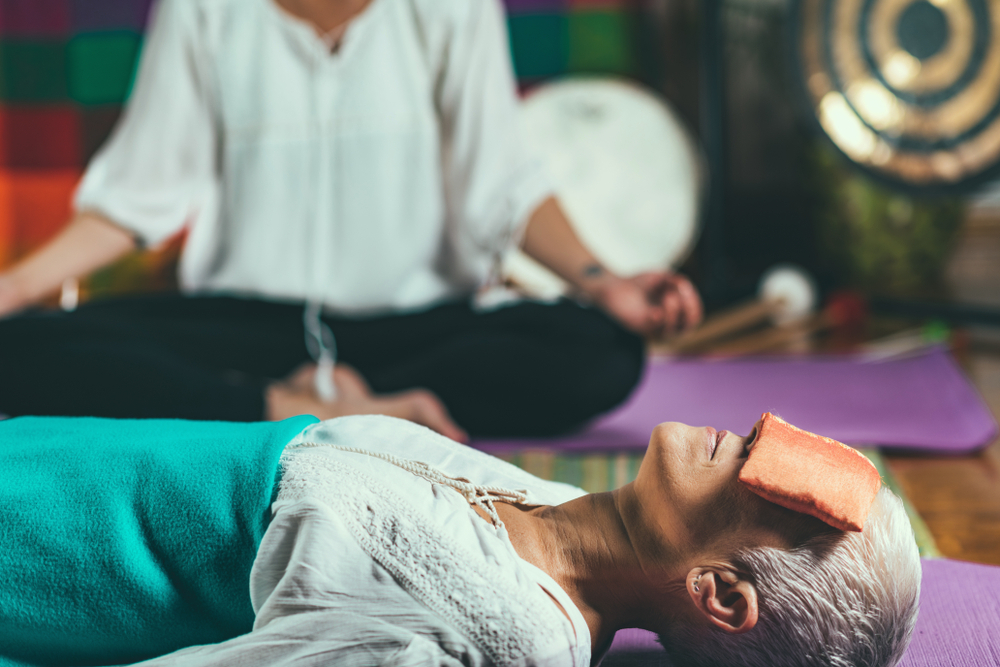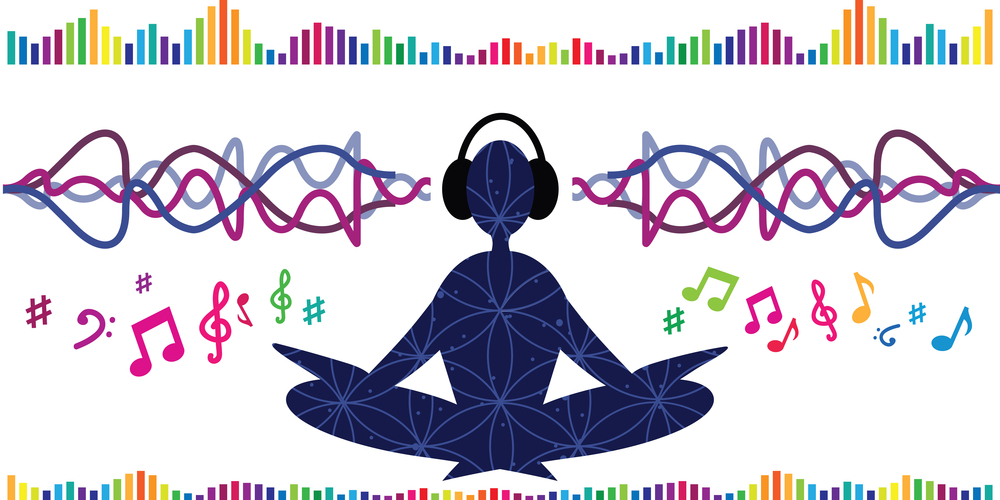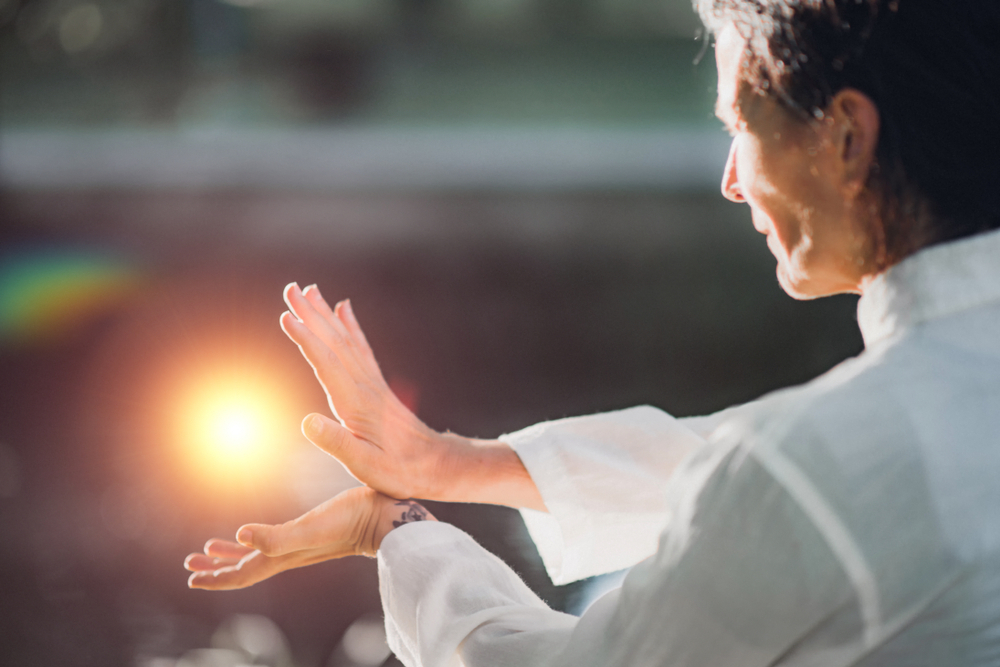De-Stressing With Different Meditation Types
Meditation provides you with a unique but divine form of energy that most of us lack in our daily lives owing to our lifestyle choices. It not only energizes your body but also rejuvenates your soul. Here we have found some amazing types of meditations, for those who are experiencing annoying stress 24/7 in life. These meditation tips for anxiety and stress will definitely provide an add-on to your meditative and spiritual knowledge.
Guided Meditation

For beginners, guided meditation can be very beneficial. It is because someone else guides you through the process of relaxing and entering a meditative state. These are usually narrated through instruction, stories, imagery, or music. They can be accessed through a sound file (mp3, CD/DVD, etc.) on your computer, phone, tablet, or video.
The senses are used in guided meditation. To visualize various methods of relaxation, you use smells, sights, sounds, and textures. Above all, you often follow along as a guide instructs you on how to breathe, relax muscle groups, and achieve an inner sense of calm.
Guided Therapeutical Imagery

The concept of mind-body connection best explains guided therapeutic imagery. It is a technique in which mental health professionals assist individuals in therapy in focusing on mental images in order to elicit feelings of relaxation.
The interaction between body and mind is one important factor in a person’s overall health and well-being. A person can use mental images to improve both emotional and physical health using guided therapeutic imagery.
HISTORY OF GUIDED THERAPEUTICAL IMAGERY
Guided imagery has been used in various forms for centuries, dating back to ancient Greece. The technique is well-established in Chinese medicine, American Indian traditions, and other healing and religious practices.
However, the enactment of the person in therapy’s unique concerns can be understood as a method of directing a person’s own imagery, according to Jacob Moreno’s technique of psychodrama, developed in the 1940s. In fact, Hans Leuner, who further developed psychodrama, coined the term “guided affective imagery” to describe the technique.
Dr. David Bressler and Dr. Martin Rossman established support for guided imagery as a viable treatment option for chronic pain, cancer, and other serious illnesses in the 1970s. In 1989, they co-founded the Academy for Guided Imagery as a result of their work.
During the 1980s, a number of health advocates and professionals began to publish materials examining the beneficial effects of guided imagery on mental and physical health issues. Some examples include Ulrich Schoettle, Leslie Davenport, and Helen Bonny.
Guided imagery is currently a well-established approach in complementary and alternative medicine, and studies show that when used as part of the therapeutic process, it is often beneficial.
THERAPEUTIC IMAGERY TECHNIQUES WITH GUIDANCE
Guided therapeutic imagery is a technique that can be used in a variety of therapeutic settings and modalities, including group and individual therapy.
The technique can be practiced without the supervision of a therapist once it has been learned. Scripts for guided imagery can be found on the internet and in self-help books.
THE TECHNIQUE
Many people can benefit from practicing guided imagery on their own, but it is usually best to seek guidance from a trained professional before attempting to use it on your own. Individuals can benefit from instruction in the technique to get the most out of the intervention.
Moreover, a therapist will usually give verbal prompts to direct the focus of the imagery, often encouraging the participant to notice different sensory aspects of the scene. A person in therapy might be asked to imagine a peaceful place, complete with all of the aromas, sounds, and textures that are present.
Because it involves all five senses, guided therapeutic imagery goes beyond visualization. The goal of guided imagery is to affect both the body and the mind. During the process, breathing becomes slower and more controlled while muscles relax, resulting in a state of calm and relaxation. Some practitioners may incorporate music into their practice.
GUIDED IMAGERY AND HYPNOSIS
The technique of guided therapeutic imagery is similar to hypnosis and other techniques for inducing a state of relaxation. Both techniques entail some visualisation, a focus on the inner mental experience, and a relaxed mindset.
Hypnosis, on the other hand, focuses more on the suggestion, whereas guided imagery emphasizes the senses. When used therapeutically, hypnosis can help a person become more receptive to new ideas and beliefs by utilizing the relaxed state.
Guided imagery uses the senses to help a person better direct and focus their attention on a specific area of concern while imagining the desired outcome for that concern.
Listen to brain wave entrainment

Binaural beats are used in a variety of audio apps, CD/DVDs, and other forms of meditation to quickly facilitate deep meditation.
Now, what does these beats actually do?
These beats synchronize brain waves, causing the frequencies to change, allowing the mind to enter different states of consciousness.
Concentrative meditation can help you focus

You focus your attention on an image, object, sound, or positive mantra during concentrated meditation. A relaxing beach, a bright apple, or a calming word or phrase come to mind. The idea is that focusing on something helps to block out distracting thoughts.
Repeat a soothing word or phrase as your mantra. You can use phrases like “I feel at peace” or “I love myself,” but anything that makes you feel better will suffice. You can say it aloud or silently, depending on your preference.
Placing a hand on your stomach can help you feel your breathing while practicing controlled breathing, visualization, or mantra repetition.
Japa meditation

Japa a type of meditation that requires meditative repetition of a mantra or a holy name. It is practiced widely in Hinduism, Jainism, Sikhism, Buddhism, and Shintōism. Moreover, the name or mantra should be uttered softly, enough for the meditator to hear it, or it may be spoken inside the reciter’s mind.
To meditate, it uses a beaded rosary and the repetition of a Sanskrit term or word called ‘Mantra’.
Passage Meditation

You might also want to try passage meditation, which focuses on and achieves meditation by using spiritual or inspirational passages.
Eknath Easwaran’s book Passage Meditation was first published in 1978 under the title Meditation. The book describes a meditation technique that is now known as Passage Meditation.
The practitioner’s “spiritual growth” is the goal of this eight-point program. The program’s initial phase is to meditate on a text passage, which has been known as “Passage Meditation” since the 1990s.
The first point in Easwaran’s eight-point Passage Meditation programme is to meditate on a passage, which he recommends doing for 30 minutes every day when you first wake up.
The remaining seven points should be woven in throughout the day or week at various times.
The Eight main chapters
CH.1 Consider a passage in depth.
CH.2 Repetition of a mantra (mantra, or prayer word)
CH.3 Slowing down
CH.4 One-pointed focus
CH.5 Training the senses
CH.6 Putting others first
CH.7 Spiritual fellowship
CH.8 Spiritual reading
You can buy this book here:
Mindfulness Meditation to help you relax.

This method of meditation concentrates your attention on the present moment. During meditation, you bring awareness to what is happening right now and your experience, such as your breathing. You’re aware of how you feel, what you’re thinking, and what’s going on around you without actively trying to change it.
Observe the thoughts and feelings that come to mind as you meditate, but don’t judge or try to stop them. Allow your emotions and thoughts to pass on their own.
Mindfulness meditation is effective because it allows you to forget about the past and the future. Obsessing over events beyond our control, both those that have happened and those that may happen, causes stress. You can stop worrying about anything with this type of meditation.
Above all, by focusing on the present moment, you can bring your thoughts and feelings back to mindful meditation. Most importantly pay attention to how your body feels. Do you take slow, deep breaths? Are your fingers in contact? You don’t stop your wandering thoughts or feelings; instead, you concentrate on what is going on right now.
Loving kindness meditation

This is a strong desire for your own happiness and well-being. You concentrate on the present moment’s feelings of love and well-being. Then you spread that feeling to the rest of the world.
Movement meditation

Yoga and T’ai Chi are well-known stress-relieving meditative practices. They promote well-being through movement and breathing. They are effective ways to meditate and maintain health, according to research.
Yoga uses a variety of movements and postures, as well as controlled breathing exercises, to help you relax and reduce stress. Because the poses necessitate balance and concentration, you will be less able to think about your stressors.
T’ai Chi is a Chinese martial art that focuses on meditation through a series of gentle postures and movements. However, the practitioner performs movements at his/her own pace, slowly and gracefully, with controlled breathing.
Firstly, take a walk and think about it. After that slowdown and concentrate on your legs and feet. As you move your leg and your foot touches the ground, notice how the movement feels. Moreover, take note of any sensations that arise. If it helps, silently repeat action words related to walking, such as “lift,” “move,” “foot down,” and so on.
Also read : How to Meditate to Relieve Stress- A Guide For Beginners – V Cure (vcurehealthcare.com)





